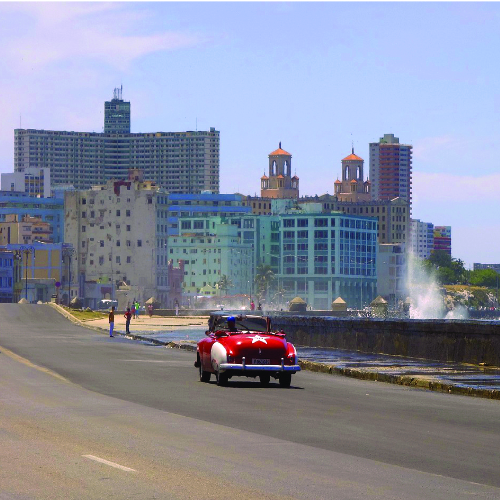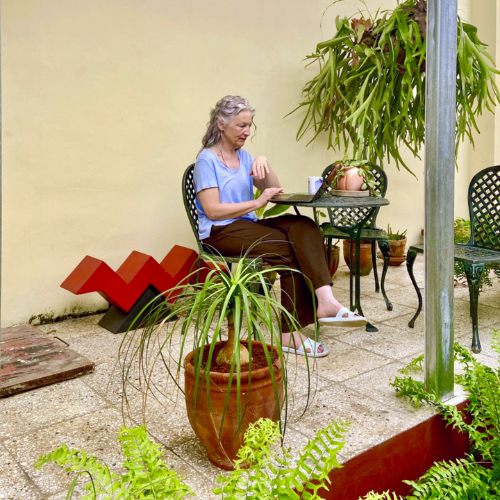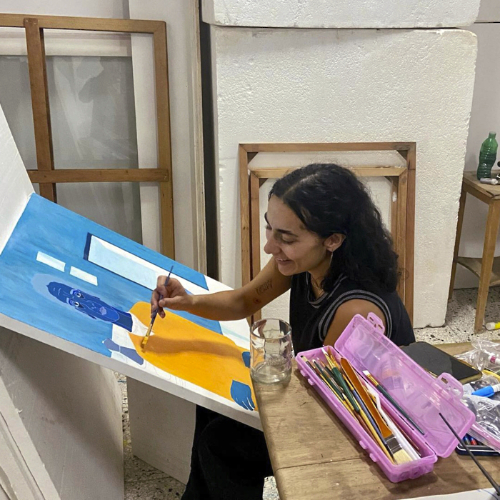As I’m a writer, this blog was very difficult to begin, not because I didn’t know what to write, but because I have too much to say. This was my fourth time to Cuba, but only my second to La Habana, and certainly the longest stretch I had spent in the country. With so many recent developments from the storms that hit Cuba and Puerto Rico and changes in U.S.-Cuban relations, it’s been hard to draw out my reflection on the residency alone.
Overall, my residency at Unpack was a profound experience which changed me and was invaluable to not only my writing project, but my creative work in general; whereas in prior trips I had gone to take dance classes and travel, this time I had the opportunity to settle into a neighbourhood, feel the experience of living there while getting deep into the creative process.
I went to Cuba to work on a book project. This will be my second full-length book, and for me, research is very holistic – it involves finding information, objects and artifacts, roaming, listening, seeing, reading. I arrived with themes and questions and topics and pursued them as a researcher would, then wrote what often came out as journal, letter or poetic notes. These themes largely focused on historical resonance between Cuba and the Philippines and include colonialism, imperialism, slavery and racism, cultural resistance, religious and cultural syncretism; I was delighted that with the support of Unpack, I was able to hone in my subject matter.

Perceived identity heavily influences experience in Cuba. I am a Filipina-American who is semi-fluent in Spanish. As I am brown-skinned and “Asian” I can be mistaken for a “China” or mixed Cuban-Asian from afar, and I found myself often semi-“passing” as such until I opened my mouth. This serves me in terms of not having to fend off hustlers targeting tourists as overtly or often; being able to enter an immersive space is precious for an artist. At the same time, to be from another country in Cuba involves constant learning. Cuba is a complex place when it comes to class, race, gender, citizenship, which dollar you carry…and there is essentially a segregated manner in which the two currencies function, separating the world that foreigners experience from that of local Cubans. These are areas I am interested in as a woman of color and topics in my writing.
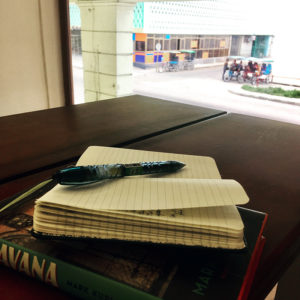
What’s very familiar to an accidental artist-scholar like myself is that the process is as much about what you find as what you don’t find; or where you end up, which can often be very different from where you began. This was very much a characteristic of my experience at Unpack Studio and in Cuba. The multi-talented daily coordinator, Laura, became my partner in crime as we often searched for particular data and books in libraries and museums, only to find that they were closed or that information was not available. But often we’d find ourselves discovering an open door in place of the closed one. For example, Laura and I spent many hours one day searching for the Philippine Embassy, walking up and down a street in Miramar, speaking with guards who all pointed to the same address I had found online, which in reality was the Panamanian Embassy. Only days later, with Omar Estrada’s help digging, did I learn that it had been closed down several years ago. But — in that process, I got to see so many other embassies, and ended up taking photos at a beautiful grove of banyan trees which reminded me of ones in the Philippines – in fact, these symbolically are important to my writing because there are stories about spirits that inhabit them. Another experience was the “accidental” meeting of several Filipinos, including one interview that is a million times more valuable than any book or data could provide. Making art in Cuba is a process of discovery, surprise, “wrong” turns that end up being right.
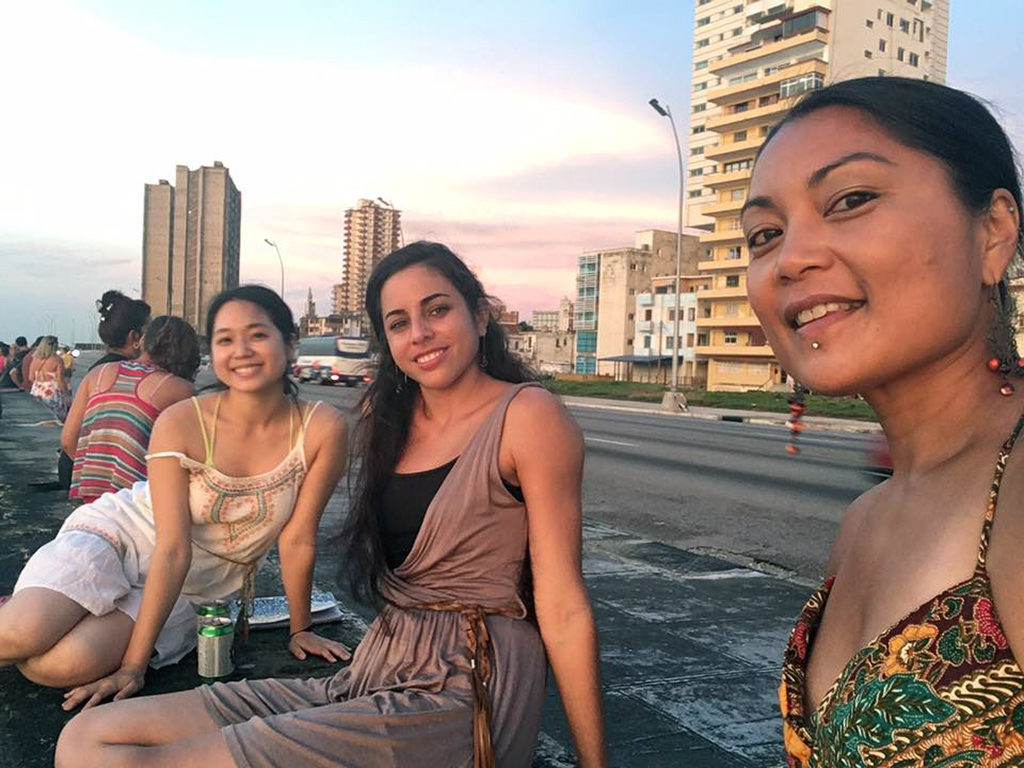
The residency was full of creative breakthroughs largely because of the invaluable support and knowledge of Wilfredo Lam Center Director Dannys Montes de Oca, the delightful artist and Vice Dean of Visual Arts at the University of Arts (ISA), Ossain Raggi and Laura Balbuzano, the daily coordinator, that latter with whom many fascinating conversations spanning writing and music to politics as well as adventures in research were essential to my rather swift and deep learning process. Although Dannys and Ossain are not in the literary arts, the cross-disciplinary perspectives were actually very useful for me, as my work is interdisciplinary.
A few specific highlights follow spanning the portions of time I was at Unpack Studio:
WEEK 1
Arrived to Laura and Paco, and a naranja refresco. Arriving to the house, we took the usual walk around the neighbourhood to figure out where the nearest shops and such were, the Malecón, the Café Bohemia where I would often write. And then settling into my room, the house painted in my favorite color, shades of yellow, and lots of light, I met my housemate the architect/photographer Dana Moody.
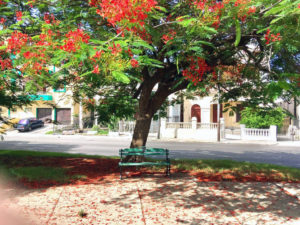
During this week Laura brought me to some sites, including the Museo de Bellas Artes. We visited UNEAC and I went on my own to the Havana International Poetry Festival’s closing event. I saw and met Nancy Morejón, Eduardo Morales and even the United States former Poet Laureate Robert Hass. The Cuban poets focused on their stance as UNEAC artists condemning President Trump’s speech in June stigmatizing Cuba and attempting to reverse the advances in US-Cuba relations established by former President Obama. Another highlight of this week was getting familiar with the Nicolás Guillén institute housed at UNEAC and attending a poetry event hosted by them.
WEEK 2— July 17-23
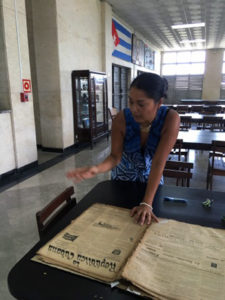
This week, I hit up libraries such as the Fernando Ortiz library, to engage in historical research. We also hit a lot of dead ends. Lesson #1: be prepared for things not to work out in Cuba as planned. This week, I met Dannys Montes de Oca; she offered excellent ideas, advice, and books that were helpful for my research. There was a particular book she lent me which was precisely what I had been looking for. Also, I discovered that even when institutions did not have the books or data, usually there was at least one person well-versed with the historical parallels between Cuba and the Philippines. This was another feature that permeated my investigations – Lesson #2: be prepared to learn things from actual people (not the internet, not books) in unexpected ways.
Ossain Raggi met with both Dana and I; later this week, I was able to meet with a descendant of a Filipino who had come to Cuba at the turn of the century – this could not be more on the head with what I was researching and writing about! This was another example of Lesson #2 at work.
WEEK 3 – I left Unpack for one week for Santiago, to experience el Carnaval. There, I started to write bilingually and trilingually. Lesson #3: creative process surprises you, even in your sleep. I was thinking and even dreaming in Spanish.
WEEKS 4-5. Returning after el Carnaval in Santiago, and having more than become familiarized with my environment in Vedado, I was ready to write! Dana, with whom I had engaged in so many useful creative, scholarly dialogues, joined for meetings about architecture in Havana, had departed, so I was able to read and write for hours on end to the whirring fan and Omar Estrada’s paintings, making espresso and fresh mango smoothies throughout the day; I’d occasionally go out dancing during the nights or simply take solitary strolls or writing sessions by the Malecón.
WEEK 5 – Aug 7-Aug 14
I returned to the Museo de Bellas Artes for the temporary Sin Máscaras exhibit, which focuses on Afro-Cuban contemporary art, with Ossain. Here, I got acquainted with the work of photographer/filmmaker, Juan Carlos Alom, as well as Carlos Mandive, both of whose work I found very fascinating. I was fortunate to later meet Juan Carlos Alom and discovered that one of my friends in Santiago, a dancer, had worked closely with Carlos Mandive. Lesson #4: When in the creative flow, synchronicities abound. You may receive magic.
WEEKS 6-7 – travel
WEEK 8 – Aug 29-Sept 2

While I was not officially at the residency any longer, I was still in my writing process and wrapped up meetings and trips that I had not completed during weeks 1-5. I was lucky to meet author, editor Edel Morales as well as visit the office of the magazine Revolución y Cultura. As a surprising additional activity, the new resident at Unpack Studio, Mayu Shirai from Japan, and I, began to engage in cross-disciplinary dialogue and I suggested we do an on-site collaboration, with little preparation. I wrote and she created gesture, drawing from cross-cultural epiphanies we were having about Japan, the Philippines, Cuba and the United States, and at the scenic ruins of the Trotcha Hotel, we did several takes of a text-dance piece, “Art is…instinctual.” She also filmed me performing my new piece “We, the Beasts,” at that same site.
Aimee and Mayu short excerpt
The outcomes of the Unpack Studio residency were beyond my expectations. It helps that I am interdisciplinary both in what inspires me to write as well as how it manifests. But as testimony to the power of the artistic “accident,” I found myself not only yielding new poems and collecting new creative “data,”—I also did a dance-text performance, recorded two spoken word poems at historic sites, made a series of informal video blogs, engaged in interviews, and returned to be invited to perform portions of my writing coming out of this residency with musicians – the Kronos Quartet.
We the Beasts by Aimee Suzara
Thank you so much to the organizers of Unpack for helping support the very important, often mysterious and at-times-precarious beginnings of my new book project – and helping me establish a new and deepened relationship with place and people in Cuba. Muchas gracias a todos.
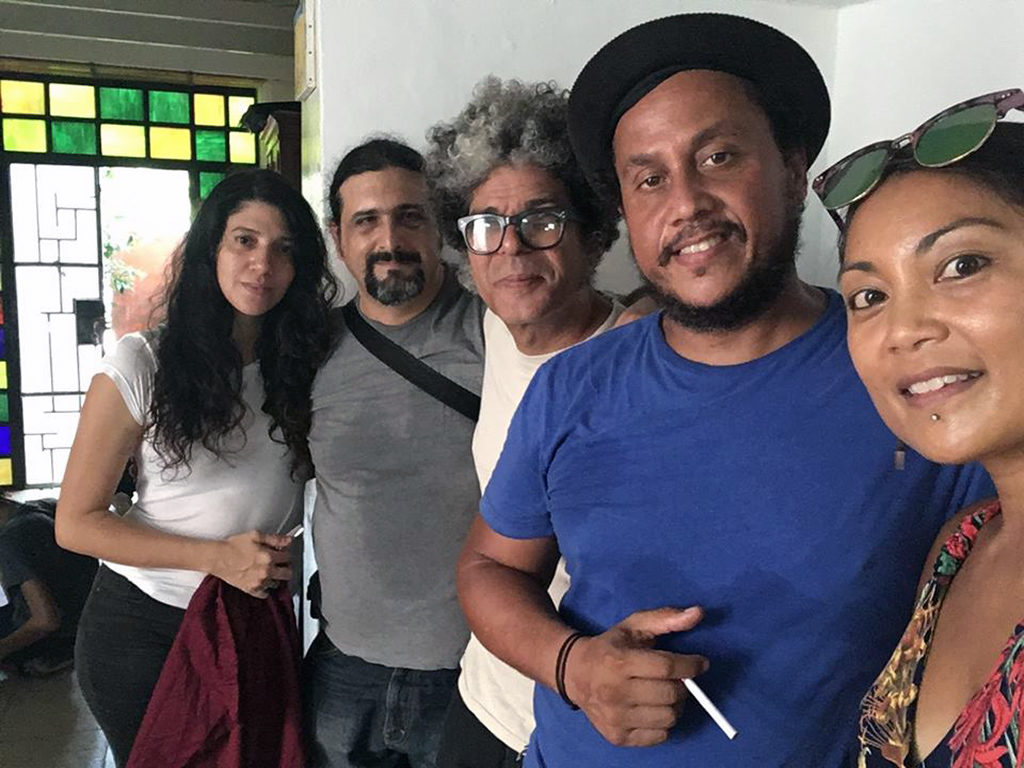
This blog is a brief summary of what will be further explored on my personal blog, www.aimeesuzara.tumblr.com. There, you can see videos and more photos. Also visit my Facebook Artist Profile, Aimee Suzara, and my website, www.aimeesuzara.net. Sign up for my newsletter at
http://eepurl.com/iuvr2

